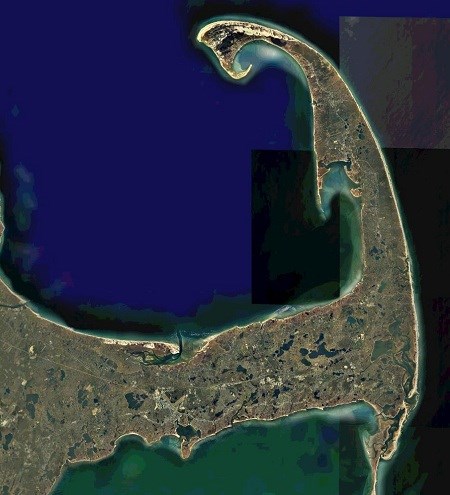
From the air, outer Cape Cod appears to be a flooded landscape – a narrow arm of glacial outwash and moraine thrust 60 miles into the North Atlantic Ocean; fringed by thousands of acres of tidal marshes; peppered with over 30 freshwater ponds. Hydrologists call it "the sand pile in the ocean" because this image best describes the Cape’s permeable soils infiltrated by seawater from both Cape Cod Bay and the Atlantic Ocean. Atop this saline groundwater floats a thin lens of freshwater sustained solely by precipitation that falls on the land surface. Fresh surface water resources, kettle ponds, dune ponds, vernal pools and the low-salinity upper reaches of estuaries, depend on fresh ground water. For the past 18,000 years of the Cape’s post-glacial existence, the sea has dominated the local environment. Strong winds and salt spray stress even the hardy pitch pines and bear oaks, with a clear gradient of decreasing plant height and vigor as one approaches the Atlantic bluffs. The proximity and influence of the ocean is even evident in the ionic composition of the Park’s kettle ponds, essentially containing very dilute seawater. Environment FactorsThe dominant vegetation of outer Cape Cod’s forests, mostly pitch pine and black oak, has changed little over the past 9000 years, with the very important exception of almost total deforestation by European settlers from 1650 to 1900. Surviving artifacts of the extensive deforestation include globally rare heathland plant communities. These original pine-oak forests burned frequently, creating a mosaic of open and wooded habitats. Over the past 100 years much of the upland forest has grown back, especially on National Seashore lands which are protected from housing development. However, with fire suppression, the seashore's current forests are much less diverse than the prehistoric forests. Besides early deforestation, more modern human activities have altered the environment in various ways: suppressing natural fires, restricting tidal flow into coastal salt marshes, potentially loading surface waters with polluting nutrients and, from more distant pollutant sources, even changing the chemistry of precipitation. However, water quality to date remains high in freshwater ponds, estuaries and seashore beaches. Seashore staff monitor park terrestrial and water resources intensively in an effort to understand change and avoid or mitigate human-caused damage. The Park is also active in the restoration of human-disturbed habitats. |
Last updated: October 28, 2024
